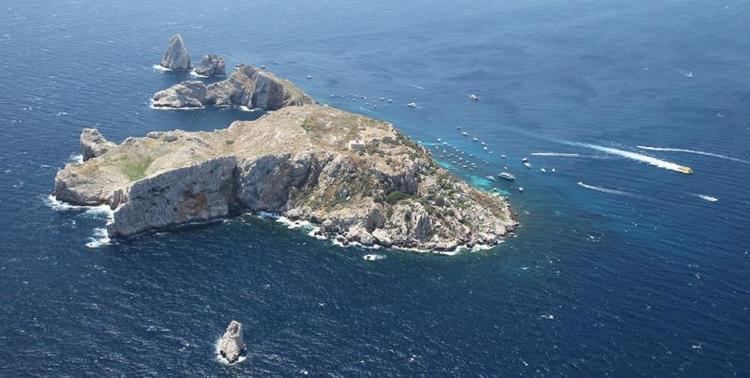Comarca Baix Empordà Time zone CET (UTC+1) Municipality Torroella de Montgrí | Highest elevation 75 m (246 ft) Area 22 ha | |
 | ||
Similar Montgrí Massif, Costa Brava, Cap de Creus, Montgrí Castle, Museu de la Mediterrània | ||
Medes islands l estartit costa brava drone aerial view
The Illes Medes (Spanish: Islas Medas) is a small and craggy group of seven islets in the northwestern Mediterranean Sea. Administratively, the Medes Archipelago belongs to the Baix Empordà comarca, Catalonia, Spain.
Contents
- Medes islands l estartit costa brava drone aerial view
- Map of Medes Islands Spain
- Scuba diving medes islands scuba diving illes medes
- Islands
- History
- Ecology
- References
Map of Medes Islands, Spain
The islands are located close to the shore, east of the coastal town of L'Estartit.
Scuba diving medes islands scuba diving illes medes
Islands
History
In the 15th century the Equestrian Order of the Holy Sepulchre of Jerusalem built a fortress on Meda Gran. They eventually left and pirate attacks in the 16th century damaged the fortress. The fortress became a prison during the 18th century and at the time of the Napoleonic Wars was again fortified.
On 29 August 1811 General Joaquín Ibáñez Cuevas y de Valonga, Baron de Eroles, at the behest of Luis Roberto de Lacy and with the assistance of HMS Cambrian, a Colonel Green, and British troops, landed, captured, and destroyed the fort the French had built on Meda Gran. Green then ordered the fort abandoned. Several weeks later, on 11 September, de Lacy landed on the island. He rebuilt, garrisoned and fortified the fort, and symbolically renamed the islands the Isles of the Restoration. The last military garrison left in 1890.
Ecology
The Catalan Autonomous Government declared the islands a protected area in 1983. They are now becoming an important marine reserve in the Western Mediterranean.
Despite the ravages caused by industrial pollution and mass-tourism in the Mediterranean coast of the Iberian Peninsula, there is still a significant amount of marine biodiversity in the waters off the islands, such as large submarine meadows of Posidonia oceanica, and underwater caves where groupers breed.
